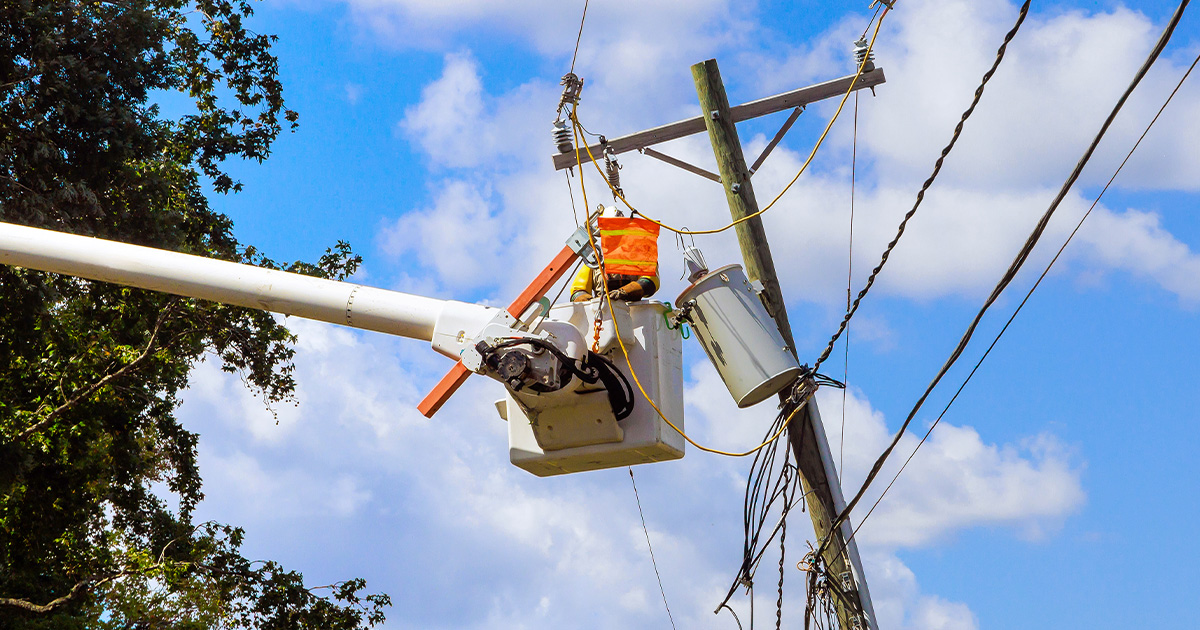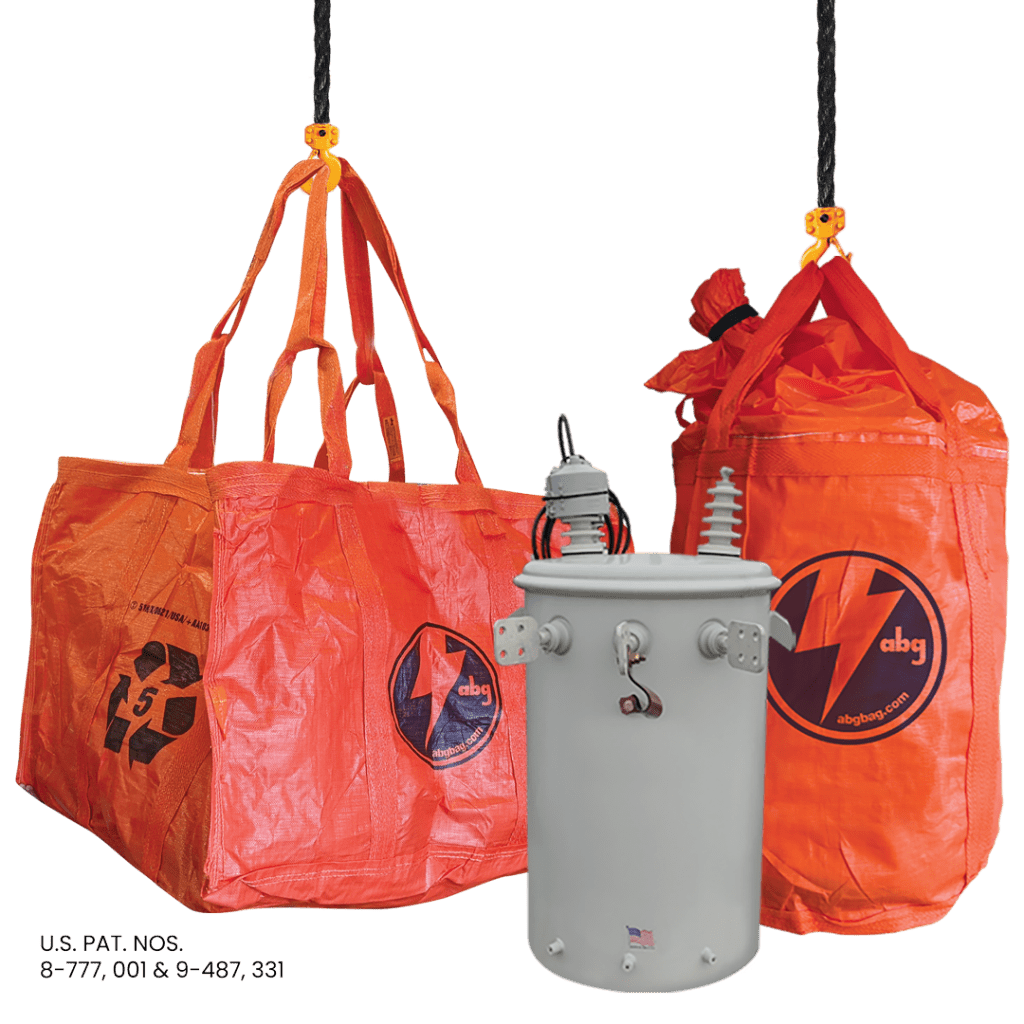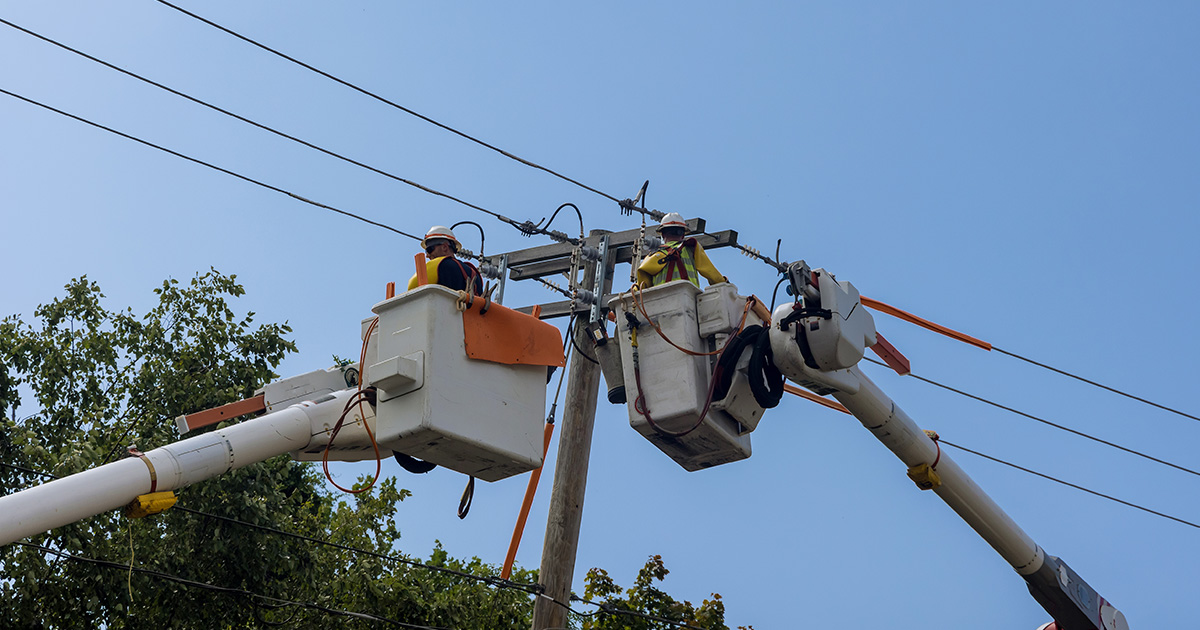0
Need help?
Customer satisfaction is our priority. Whether you have questions about our sustainable containment solutions, need help with an order, or require assistance finding the right product for your needs, we’re here to help.
Customer satisfaction is our priority. Whether you have questions about our sustainable containment solutions, need help with an order, or require assistance finding the right product for your needs, we’re here to help.
Utility companies, electrical contractors, and service providers share a common challenge: maintaining compliance while protecting the environment from transformer oil leaks and spills. Transformers filled with insulating oil are critical for reliable power distribution, but when leaks occur, the consequences can be serious—ranging from environmental damage to costly fines.
A transformer oil spill kit offers utilities the resources to respond immediately to leaks, keeping operations compliant and minimizing cleanup costs. While transformer maintenance containment bags, transformer spill control bags, and other proactive systems provide ongoing protection, spill kits are the rapid-response tools that ensure utilities are always prepared.
This page explores the role of transformer oil spill kits in utility compliance, including answers to three important questions utilities frequently ask:
Throughout, we will show how spill kits work hand in hand with transformer spill containment solutions—such as utility transformer containment bags, pole-mounted transformer oil spill bags, and PCB transformer containment solutions—to create a comprehensive compliance strategy.
Transformer oil is more than just a lubricant—it is a dielectric fluid used to insulate and cool transformers. While necessary for operation, this oil can create risks if released into the environment. Soil, water, and pavement contamination are common results of leaks, and cleanup is often expensive.
That’s why transformer oil spill kits are vital. They provide utilities with absorbents, booms, pads, protective gear, and disposal materials needed for immediate response. Unlike permanent containment measures such as environmental compliance transformer bags, spill kits are portable and reactive, ready to be deployed at a moment’s notice. In the utility field, being prepared is not optional. Regulations from agencies such as OSHA, EPA, and the DOT expect utility providers to have both proactive and reactive systems in place. Spill kits ensure that utilities can demonstrate readiness, protect workers, and reduce liability during inspections or audits.

The Occupational Safety and Health Administration (OSHA) plays a central role in establishing workplace safety standards across industries, including the utility sector. Its mission is to protect workers from hazards that could cause injury, illness, or death. When it comes to transformers and other oil-filled equipment, OSHA’s concerns focus on three primary risks: slip hazards, fire hazards, and chemical exposure.
While OSHA does not issue a regulation that explicitly states “employers must provide spill kits,” the agency does enforce several standards that indirectly require employers to have effective methods for managing spills. The Hazard Communication Standard (29 CFR 1910.1200) requires employers to inform workers about hazardous chemicals in the workplace and to provide protective measures for handling them. Transformer oil, particularly in large volumes, qualifies as a hazardous material that must be properly contained and controlled.
Additionally, OSHA’s General Duty Clause obligates employers to provide a workplace free from recognized hazards that are likely to cause harm. If a spill creates unsafe conditions—for example, oil on a walkway creating slip hazards—OSHA inspectors may determine that an employer failed to meet this obligation. Having a transformer oil spill kit on site provides clear evidence that the employer is prepared to mitigate these risks.
Spill kits are not just convenient accessories; they are practical tools that align directly with OSHA’s expectations. A transformer oil spill kit typically includes absorbent pads, socks or booms, protective gloves, goggles, and disposal bags. These components enable workers to respond immediately when a leak occurs.
Consider two real-world examples that highlight why spill kits are viewed as compliance measures:
By equipping worksites with transformer oil spill kits, utilities can show inspectors that they have both anticipated the risks and invested in reasonable protective measures.
Spill kits should not be viewed in isolation. They are most effective when integrated into a broader transformer spill containment program. OSHA focuses on worker safety, but utility companies must also meet environmental and transportation regulations from agencies like the EPA and DOT. To bridge these requirements, many utilities combine spill kits with proactive containment tools such as:
When these systems are in place, a spill kit serves as the reactive backup—available to address unexpected releases, equipment failures, or leaks that exceed the capacity of containment bags. This layered approach reduces liability, simplifies compliance, and ensures that workers always have the tools they need.
Although OSHA regulations provide the framework, the real goal is creating a safer workplace. Spill kits do more than satisfy compliance checklists; they reinforce a culture of safety within utility operations. Workers who see that their employer has invested in transformer spill containment solutions and transformer oil spill kits understand that safety and environmental protection are priorities. This improves morale, reduces accidents, and builds public trust in utility operations.
In summary, OSHA does not explicitly mandate spill kits in its written regulations. However, the agency’s rules on hazard communication, safe walking surfaces, and the General Duty Clause effectively require employers to have the means to address spills. For utilities managing oil-filled equipment, transformer oil spill kits are the most straightforward, effective way to demonstrate OSHA compliance. When paired with utility transformer containment bags, pole-mounted transformer oil spill bags, and other spill containment solutions for transformers, they form a complete strategy that keeps workers safe, protects the environment, and ensures regulatory readiness.
A transformer oil spill kit is more than just a box of absorbent materials—it is a carefully assembled set of tools designed to help utility crews respond quickly and effectively to oil leaks. Not all spill kits are created equal, and utilities must ensure that the kit they deploy includes components appropriate for transformer oil specifically.
At a minimum, a comprehensive transformer oil spill kit should include the following items:
These pads are engineered to soak up transformer oil rapidly, preventing it from spreading across surfaces such as pavement, soil, or concrete. Their high absorbency ensures that leaks are contained efficiently, reducing cleanup time and environmental risk.
These long, flexible tubes are used to encircle leaks and prevent oil from flowing into drains, stormwater systems, or other sensitive areas. Booms are especially useful near transformer pads, substations, or pole-mounted transformers where leaks might otherwise travel downhill or into public spaces.
Worker safety is critical during spill response. A complete kit should include gloves, goggles, and sometimes coveralls to shield maintenance crews from direct contact with transformer oil. By providing PPE within the spill kit, utilities can ensure compliance with OSHA standards and reduce the risk of injury or chemical exposure.
Oil-soaked absorbents and other contaminated materials must be disposed of safely and in accordance with environmental regulations. Heavy-duty disposal bags with secure ties allow crews to transport used materials to approved disposal sites without creating additional hazards.
Clear, step-by-step guidance is essential for ensuring that workers can respond efficiently during an emergency. Spill kits should include instructions covering containment, cleanup, and proper disposal procedures.
These components together form a basic but fully functional kit that addresses most oil spill scenarios associated with transformers.
While these elements represent the minimum requirements, utilities often customize their spill kits to match the scale and nature of their operations. Transformer oil spills vary in size, location, and risk, so kit contents should reflect these variables. For example, a small utility managing pole-mounted transformers may prioritize lightweight, portable spill kits. These kits can be carried by a single technician to remote locations, providing rapid containment for drips or minor leaks.
Larger utilities or substations may need bulk transformer oil spill kits with higher absorbent capacity, larger booms, and additional PPE to handle more substantial leaks. In areas with complex drainage systems or stormwater risks, kits may include storm drain covers, secondary absorbents, or neutralizers to prevent oil from entering waterways. By tailoring spill kits to their specific operational needs, utilities can ensure that every potential spill scenario is addressed promptly, minimizing environmental impact and regulatory exposure.
It is important to note that spill kits are reactive tools—they are intended for emergency use, not continuous containment. For long-term protection, transformer maintenance containment bags, environmental compliance transformer bags, and pole-mounted transformer oil spill bags are essential.
Containment bags provide ongoing protection by catching leaks as they occur, preventing oil from reaching soil, pavement, or stormwater systems. Spill kits, in contrast, are deployed when leaks exceed the capacity of containment bags or occur before a bag has been installed. This two-tiered approach ensures that utilities have both proactive and reactive measures in place, forming a comprehensive transformer spill containment strategy.
Integrating spill kits with containment bags also supports regulatory compliance. For instance, environmental regulators often look for evidence that utilities are prepared for unexpected releases. A properly stocked transformer oil spill kit demonstrates readiness and due diligence, reducing liability in the event of a spill.


By meeting minimum requirements and considering customization options, utilities gain several key benefits:
Crews can contain and clean up leaks immediately, reducing environmental impact.
PPE and clear instructions ensure that maintenance personnel are protected during spill response.
Using spill kits alongside transformer maintenance containment bags demonstrates adherence to OSHA, EPA, and DOT guidelines.
Quick containment prevents minor leaks from becoming major environmental incidents, avoiding expensive remediation and fines.
Ultimately, a transformer oil spill kit is an essential component of any utility’s spill containment program. When combined with transformer spill control bags, utility transformer containment bags, and DOT-compliant transformer containment solutions, it provides a layered system that protects workers, communities, and the environment.
The Department of Transportation (DOT) regulates the transport of hazardous materials, which includes oil-filled electrical equipment like transformers. While DOT regulations may not state “spill kits must be present” in all cases, they do require shippers and carriers to take precautions against leaks and spills during transport.
If a utility is moving an oil-filled transformer between sites, they must ensure that no oil escapes onto roadways or into vehicles. This is where DOT-compliant transformer containment bags and spill kits intersect.
Spill kits serve as an added layer of security during transport. If a leak occurs despite the use of DOT-compliant transformer containment bags, a spill kit allows crews to immediately contain the spill, protect the environment, and comply with DOT expectations for hazardous material handling.
In addition, DOT inspections often check for emergency preparedness. A utility that carries transformer oil spill kits in transport vehicles demonstrates readiness, which can reduce liability and regulatory exposure.
Older transformers that contain PCBs require even stricter controls. PCB transformer containment solutions are specifically engineered for hazardous material compliance. When paired with spill kits, they ensure that even in the unlikely event of a leak, PCB contamination can be contained and managed according to EPA and DOT standards.
Utilities cannot rely on a single product or method for compliance. A robust spill containment program integrates multiple tools:
By combining these solutions, utilities can protect the environment, ensure worker safety, and stay ahead of regulatory requirements.
Transformer spill containment is not just about avoiding fines. It’s about demonstrating environmental responsibility and maintaining public confidence. Communities depend on utilities to operate safely. Having spill containment solutions for transformers—including oil spill kits—shows a commitment to sustainability and accountability.
For additional insight, utilities can reference the Guide To Transformer Spill Containment Solutions. This guide outlines containment strategies, regulatory considerations, and best practices in more detail.
While OSHA, DOT, and EPA requirements may differ in focus, they all expect utilities to demonstrate preparedness. Spill kits help utilities meet these expectations by providing immediate response capabilities that complement long-term containment solutions.
Whether you need transformer oil spill kits, transformer spill control bags, environmental compliance transformer bags, or DOT-compliant containment options, ABGBAG offers tested, reliable solutions tailored to utility operations.
For guidance on selecting the right products, call 800-758-8079 or by filling out the form below. Our team will help you design a spill containment program that keeps your utility compliant, your workers safe, and your community protected.
For inquiries about our products, order status, or any other information related to ABG, send us a message, and we will respond soon.
Sales & Customer Care
Product Questions
Adding {{itemName}} to cart
Added {{itemName}} to cart